
Drones
Scope & Guideline
Connecting Ideas for a Drone-Powered World.
Introduction
Aims and Scopes
- UAV Design and Control:
Research on the design, control systems, and optimization of various types of UAVs, including fixed-wing, multirotor, and hybrid models. - Autonomous Navigation and Path Planning:
Development of algorithms and frameworks for autonomous navigation, including obstacle avoidance, path planning, and trajectory optimization in various environments. - Remote Sensing and Data Collection:
Utilization of UAVs for remote sensing applications, including environmental monitoring, agricultural assessments, and infrastructure inspections. - Machine Learning and AI Applications:
Integration of machine learning and artificial intelligence in UAV operations for tasks like image recognition, tracking, and decision-making. - Communication and Networking:
Exploration of communication protocols, network architectures, and cooperative strategies for UAV swarms and networks. - Safety and Regulatory Frameworks:
Discussion of safety considerations, risk assessments, and regulatory compliance for UAV operations across different domains. - Environmental and Ecological Studies:
Utilization of UAVs in ecological research, including habitat monitoring, wildlife tracking, and environmental assessments. - Innovative Applications and Case Studies:
Showcasing novel applications of UAV technology in various fields such as healthcare, agriculture, disaster management, and urban planning.
Trending and Emerging
- Swarm Intelligence and Multi-UAV Systems:
Increased focus on the cooperative operation of multiple UAVs, exploring swarm intelligence algorithms for mission planning, coordination, and task allocation. - AI and Machine Learning Integration:
Growing interest in the application of AI and machine learning techniques for improving UAV functionalities, including real-time data processing, decision-making, and autonomous navigation. - Environmental Monitoring and Conservation:
Rising use of UAVs for environmental applications, including biodiversity monitoring, climate change assessments, and conservation efforts. - Urban Air Mobility (UAM) Research:
Emerging research around the integration of UAVs into urban air mobility systems, addressing challenges related to traffic management, safety, and regulatory frameworks. - Blockchain and Security in UAV Operations:
Increasing exploration of blockchain technology for enhancing security in UAV communications and operations, particularly in sensitive applications. - Advanced Sensing Technologies:
Trend towards integrating advanced sensors (e.g., LiDAR, multispectral cameras) for enhanced data collection capabilities in various UAV applications. - Real-Time Data Processing and Edge Computing:
Emerging focus on edge computing solutions for real-time data processing in UAV operations, improving responsiveness and efficiency.
Declining or Waning
- Basic UAV Technology Reviews:
There has been a noticeable decline in fundamental review papers focusing solely on UAV technologies without specific applications, as the field matures and more application-oriented research emerges. - Traditional UAV Applications:
Research on conventional UAV applications, such as simple aerial photography or basic surveying techniques, is decreasing as more sophisticated and integrated applications gain prominence. - Single UAV Studies:
Research focusing on the operational capabilities of a single UAV is waning in favor of studies that explore multi-UAV systems and swarm technologies. - Low-Resolution Imagery Studies:
Papers utilizing low-resolution imagery or traditional sensors are becoming less common, as high-resolution and multispectral imaging technologies advance and become the standard. - Manual Control Techniques:
Research centered around manual control of UAVs is declining as emphasis shifts towards autonomous and semi-autonomous systems with advanced control algorithms.
Similar Journals
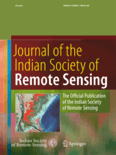
Journal of the Indian Society of Remote Sensing
Bridging Theory and Practice in Earth SciencesJournal of the Indian Society of Remote Sensing, published by SPRINGER, stands as a prominent contribution to the fields of Earth and Planetary Sciences and Geography, Planning and Development. With an ISSN of 0255-660X and an E-ISSN of 0974-3006, this esteemed journal has been in circulation since 1973, showcasing a rich repository of research and advancements in remote sensing applications, methodologies, and technologies, specifically within the Indian context and beyond. The journal's impact is underscored by its placement in the Q2 category of both Earth and Planetary Sciences and Geography as of 2023, ranking impressively in the Scopus database with significant percentiles. With the intent to bridge the gap between theory and practical application, it invites scholars, researchers, and professionals to contribute innovative studies that enhance our understanding of remote sensing and its implications in various domains. The Journal of the Indian Society of Remote Sensing is a vital resource for anyone looking to remain at the forefront of research in this dynamic field.
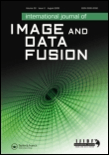
International Journal of Image and Data Fusion
Transforming Insights Through Advanced Data Fusion TechniquesThe International Journal of Image and Data Fusion, published by TAYLOR & FRANCIS LTD, is a premier scholarly journal dedicated to the fields of computer science applications and earth and planetary sciences. With an ISSN of 1947-9832 and E-ISSN 1947-9824, this journal offers a unique platform for researchers, professionals, and students interested in the innovative integration of image processing and data fusion techniques. Operating from the United Kingdom, it plays a vital role in advancing knowledge and facilitating discussions in these rapidly developing domains, evidenced by its ranking within the Q3 category for Computer Science Applications and Q2 for Earth and Planetary Sciences in 2023. The journal features rigorous peer-reviewed content that spans from 2010 to 2024, encouraging the dissemination of novel research findings and methodologies. With a notable impact factor and strong Scopus rankings, it remains an essential resource for those seeking to enhance their understanding and application of sophisticated data fusion technologies in their academic or professional work.

Journal of Unmanned Vehicle Systems
Advancing unmanned vehicle technology for a smarter future.Journal of Unmanned Vehicle Systems, published by CANADIAN SCIENCE PUBLISHING, is a leading peer-reviewed journal dedicated to advancing the field of unmanned vehicle technology. With an ISSN of 2291-3467, this journal provides an essential platform for researchers and professionals interested in the intersection of engineering, computer science, and control systems as they pertain to unmanned vehicles. The journal has achieved commendable rankings in Scopus, including a rank of #17/118 in Mathematics - Control and Optimization and #23/131 in Aerospace Engineering, reflecting its impact in these significant areas. As an open-access journal, it fosters global collaboration and accessibility, ensuring that innovative research in unmanned vehicle systems reaches a broad audience. The journal's objectives are to publish high-quality research articles, technical notes, and reviews that contribute to the understanding and development of autonomous systems. With its coverage spanning from 2013 to 2021, the Journal of Unmanned Vehicle Systems remains a vital resource for advancing discussions and knowledge in this rapidly evolving field.
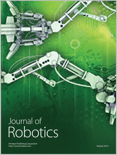
Journal of Robotics
Pioneering Innovations in Autonomous SystemsJournal of Robotics, published by HINDAWI LTD, is a premier open-access journal dedicated to the rapidly evolving field of robotics. With its ISSN 1687-9600 and E-ISSN 1687-9619, the journal has been an essential resource for researchers, professionals, and students since its establishment in 2009. Based in England, the journal not only aims to disseminate cutting-edge research but also provides a platform for critical discussions on the latest advancements in robotics. Recognized for its quality, the journal holds a Q2 ranking in Computer Science (miscellaneous) and a Q3 ranking in Control and Systems Engineering for the year 2023. Spanning topics from autonomous systems to robotic engineering, the Journal of Robotics is indexed in various esteemed databases, making it a credible source for innovative research. The journal's commitment to open access ensures that its research reaches a broad audience, encouraging collaboration and driving forward the boundaries of technology and engineering.
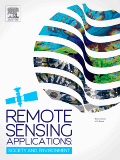
Remote Sensing Applications-Society and Environment
Transforming data into action for a healthier planet.Remote Sensing Applications-Society and Environment, published by Elsevier, stands at the forefront of interdisciplinary research, bridging the fields of remote sensing and environmental science. With an impressive impact factor and recognition within the Q1 quartile in both Computers in Earth Sciences and Geography, Planning and Development, the journal is a vital resource for researchers, professionals, and students committed to advancing our understanding of environmental dynamics through innovative remote sensing technologies. Since its inception in 2015, this journal has cultivated a rich repository of knowledge, addressing pertinent societal and environmental issues, making it a leading source for transformative applications in the field. Accessible and relevant, articles published here not only explore theoretical advancements but also practical implications, ensuring research findings are effectively disseminated to stimulate further inquiries and applications in sustainability and ecological stewardship. The journal's strong Scopus rankings, particularly within its categories, solidify its role as an essential platform for scholarly exchange.
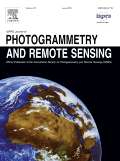
ISPRS JOURNAL OF PHOTOGRAMMETRY AND REMOTE SENSING
Exploring the Frontiers of Remote Sensing TechnologyISPRS Journal of Photogrammetry and Remote Sensing is a prestigious publication at the forefront of the fields of photogrammetry and remote sensing. Established in 1989 and published by Elsevier, this journal has consistently maintained a strong academic standing, currently holding a top-tier Q1 ranking across multiple categories, including Atomic and Molecular Physics, Computer Science Applications, and Engineering. This reflects its vital contribution to advancing knowledge and technology in these dynamic fields. The journal is not only a vital resource for researchers and professionals but also serves as an essential academic platform for students keen on delving into the latest developments in geospatial sciences. The journal operates under a non-open access model, ensuring that submitted research adheres to the highest standards of scholarly communication and integrity. With an impactful focus, it brings innovative research, comprehensive reviews, and significant case studies to a global audience. The ISPRS Journal is crucial for those aiming to enhance their understanding and application of remote sensing techniques within various scientific disciplines.

AUTONOMOUS ROBOTS
Shaping Tomorrow’s Autonomous Solutions.AUTONOMOUS ROBOTS, published by SPRINGER, is a leading academic journal that serves as a pivotal platform for the dissemination of cutting-edge research in the field of Autonomous Robotics. With an ISSN of 0929-5593, this esteemed journal has been at the forefront of innovation since its inception in 1994, and it continues to thrive with a vision extending to 2024 and beyond. Recognized in the Q1 category of Artificial Intelligence, it boasts a commendable ranking of #85 out of 350 in Computer Science and Artificial Intelligence, positioning it within the 75th percentile of researchers' preferred publications. The journal features a range of subjects related to autonomous systems, including but not limited to robot perception, action planning, multi-agent systems, and autonomous interactions, catering to an audience that spans researchers, industry professionals, and students alike. Scholars can access a wealth of peer-reviewed articles that contribute to both theoretical frameworks and practical applications, ensuring the relevance of the work published within its pages. Located in Dordrecht, Netherlands, AUTONOMOUS ROBOTS exemplifies a commitment to advancing the science of robotics, making significant contributions to the knowledge base and inspiring new developments within the field.

Robotic Intelligence and Automation
Transforming Ideas into Intelligent Solutions.Robotic Intelligence and Automation is a pioneering academic journal dedicated to the exploration and advancement of knowledge within the realms of robotics, artificial intelligence, and automation technologies. Published by EMERALD GROUP PUBLISHING LTD in the United Kingdom, this journal serves as a critical platform for researchers, professionals, and students who strive to understand and innovate in these rapidly evolving fields. With an impressive visibility across multiple disciplines, it has achieved a respectable Q2 ranking in Computer Science Applications, Control and Systems Engineering, Electrical and Electronic Engineering, and Industrial and Manufacturing Engineering, while also being recognized in Q3 for Artificial Intelligence and Human-Computer Interaction. The journal boasts a comprehensive Open Access model, allowing broad dissemination of research findings, which is vital for fostering collaboration and learning within the scientific community. Researchers can look forward to contributing to a publication that not only addresses current challenges but also seeks to shape the future of intelligent automation and robotics.

npj Digital Medicine
Empowering Patient Outcomes with Digital Insightsnpj Digital Medicine is a leading journal in the interdisciplinary landscape of digital health, published by NATURE PORTFOLIO. Since its inception in 2018, this open-access journal has rapidly established itself as a premier platform for innovative research and insights at the intersection of technology and healthcare. With an impressive impact factor and ranked in the Q1 category across multiple fields—including Computer Science Applications, Health Informatics, and Medicine—npj Digital Medicine represents the forefront of research aimed at revolutionizing patient care and healthcare delivery through digital advancements. The journal is positioned in the top percentiles of Scopus rankings, highlighting its vital role in shaping the future of medicine in an increasingly digital world. By providing a space for rigorous research and practical applications, npj Digital Medicine invites contributions from researchers, clinicians, and technologists eager to explore novel solutions to contemporary health challenges, ultimately enhancing patient outcomes on a global scale.
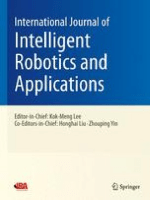
International Journal of Intelligent Robotics and Applications
Advancing the Future of Robotics and AIInternational Journal of Intelligent Robotics and Applications, published by SPRINGER SINGAPORE PTE LTD, is a pivotal platform dedicated to advancing the field of robotics and artificial intelligence. With an ISSN of 2366-5971 and an E-ISSN of 2366-598X, this journal has established its presence since its inception in 2017, showcasing innovative research and applications up until 2024. The journal aims to foster interdisciplinary collaboration by publishing high-quality articles that cover a broad range of topics from foundational AI concepts to cutting-edge robotics technologies. It holds respectable rankings, positioned in the Q3 category of Artificial Intelligence and Q2 category of Computer Science Applications in the 2023 metrics, and is indexed in Scopus with notable rankings in both computer science disciplines. Although it follows a subscription model, the journal remains committed to facilitating access to groundbreaking research for its audience of researchers, professionals, and students, contributing to the ever-evolving landscape of intelligent robotics.